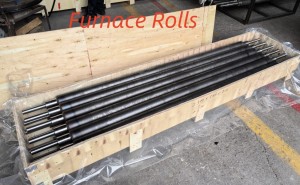A Comprehensive Overview of Furnace Rolls:
Key Components in Industrial Heat Treatment Processes
Furnace rolls are critical components in various industrial heat treatment processes. These rolls, often overlooked, play a pivotal role in the efficiency, quality, and cost-effectiveness of heat treatment operations. This article delves into the intricacies of furnace rolls, their types, materials, applications, and the technological advancements that are shaping their development.
Types of Furnace Rolls
Furnace rolls are categorized based on their specific functions and the environments in which they operate. The primary types include:
- Transport Rolls: These rolls are designed to convey materials through the furnace, ensuring a consistent and controlled movement. They are crucial in maintaining uniform heating and cooling rates, which is vital for achieving desired material properties.
- Support Rolls: Support rolls provide stability and support to the materials being processed. They bear the weight of the load and help in maintaining alignment and positioning within the furnace.
- Drive Rolls: These rolls are connected to a drive mechanism that facilitates the movement of the material through the furnace. They are essential for ensuring a steady and controlled feed rate.
- Sealing Rolls: Sealing rolls are used in applications where the furnace atmosphere needs to be isolated from the external environment. They prevent gas leakage and ensure that the internal conditions remain stable and consistent.
Materials Used in Furnace Rolls
The choice of material for furnace rolls is crucial as it directly impacts their performance, longevity, and ability to withstand harsh operating conditions. Common materials include:
- High-Temperature Alloys: Alloys such as Inconel, Hastelloy, and other nickel-based superalloys are frequently used due to their excellent resistance to oxidation and thermal fatigue at high temperatures.
- Ceramic Coated Rolls: Ceramic coatings on rolls provide excellent thermal insulation and resistance to wear and corrosion. These coatings are particularly beneficial in environments where the rolls are exposed to corrosive gases or extreme temperatures.
- Cast Iron and Steel: For lower temperature applications, cast iron and various grades of steel are used. These materials offer a good balance of strength, cost-effectiveness, and thermal conductivity.
- Composite Materials: Advances in material science have led to the development of composite materials that combine the benefits of metals and ceramics. These composites offer superior performance in terms of strength, thermal resistance, and durability.
Applications of Furnace Rolls
Furnace rolls are integral to various industrial sectors, including:
- Metallurgy: In the steel and aluminum industries, furnace rolls are used in continuous annealing lines, galvanizing lines, and hot strip mills. They ensure uniform heating and cooling, which is critical for achieving the desired mechanical properties in metals.
- Glass Manufacturing: In glass production, furnace rolls facilitate the transport of glass sheets through annealing lehrs and tempering furnaces. They help in controlling the cooling rate to prevent thermal shock and ensure the quality of the final product.
- Ceramics and Refractories: Furnace rolls are used in kilns and other high-temperature processes to transport ceramic tiles, bricks, and other refractory materials. They must withstand high temperatures and corrosive atmospheres.
- Chemical Processing: In the chemical industry, furnace rolls are employed in processes involving high-temperature reactors and pyrolysis units. They aid in the controlled heating and cooling of chemical products.
Technological Advancements
The evolution of furnace rolls is driven by the need for higher efficiency, better performance, and reduced operational costs. Key advancements include:
- Enhanced Materials: The development of new high-performance alloys and composite materials has significantly improved the durability and thermal resistance of furnace rolls.
- Advanced Coatings: Innovations in coating technologies have led to the creation of multi-layered ceramic and metallic coatings that enhance the wear resistance and lifespan of furnace rolls.
- Precision Engineering: Modern manufacturing techniques, such as CNC machining and additive manufacturing, enable the production of furnace rolls with higher precision and intricate designs. This results in better performance and reduced maintenance requirements.
- Smart Monitoring Systems: The integration of IoT (Internet of Things) and sensor technologies into furnace rolls allows for real-time monitoring of temperature, load, and wear. This data can be used to optimize the heat treatment process and predict maintenance needs, thereby minimizing downtime.
Conclusion
Furnace rolls are indispensable components in industrial heat treatment processes, ensuring the efficient and uniform heating and cooling of materials. The continuous advancements in materials, coatings, and manufacturing technologies are enhancing the performance and longevity of these critical components. As industries strive for greater efficiency and cost-effectiveness, the role of furnace rolls in achieving these goals cannot be overstated.
For any additional information, I encourage you to visit our website at
If this sounds interesting or you want to learn more, would you please let me know your availability so we can arrange a suitable time for us to connect to share more information? Don’t hesitate to send email at della@welongchina.com.
Thank you in advance.
Post time: Jul-23-2024






